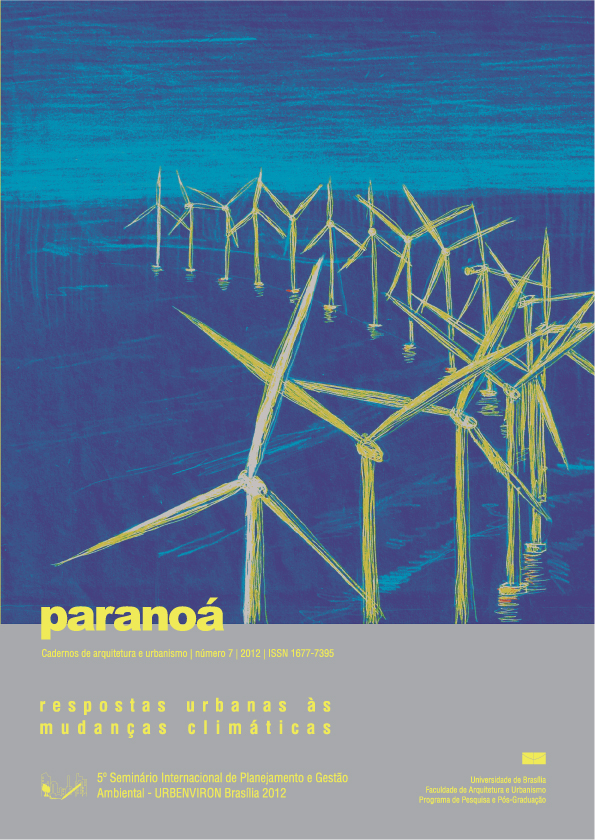Learning topics in urban planning at UFMG:Geoprocessing to support analysis, planning and proposal of the urban landscape at neighborhood scale
DOI:
https://doi.org/10.18830/issn.1679-0944.n7.2012.12313Keywords:
Urban parameters, Landscape design simulation, Parametric modeling of territorial occupationAbstract
Reports the experience of training students in the use of geotechnologies to support analysis, planning and proposal of the urban landscape at neighborhood scale, using Multi-Criteria Analysis for identification potentials, vocations and conflicts of interest in land use. They built Environmental Interest Synthesis, Urban Occupation Synthesis, and Conflicts of interest Synthesis. The three-dimensional representation of the territory was used to support the proposed zoning. Students act in a more conscious manner when creating projects, undertaking predictive studies on the landscape, since they are fully able to understand the consequences of the intervention on urban spaces and observe climatic changes.
Downloads
Downloads
Published
How to Cite
Issue
Section
License
Autores que publicam nesta revista concordam com os seguintes termos:
- Autores mantém os direitos autorais e concedem à revista o direito de primeira publicação, com o trabalho simultaneamente licenciado sob a Licença Creative Commons Attribution que permite o compartilhamento do trabalho com reconhecimento da autoria e publicação inicial nesta revista. http://creativecommons.org/licenses/by/4.0
- Autores têm autorização para assumir contratos adicionais separadamente, para distribuição não-exclusiva da versão do trabalho publicada nesta revista (ex.: publicar em repositório institucional ou como capítulo de livro), com reconhecimento de autoria e publicação inicial nesta revista.
- Autores têm permissão e são estimulados a publicar e distribuir seu trabalho online (ex.: em repositórios institucionais ou na sua página pessoal) a qualquer ponto antes ou durante o processo editorial, já que isso pode gerar alterações produtivas, bem como aumentar o impacto e a citação do trabalho publicado (Veja O Efeito do Acesso Livre).















